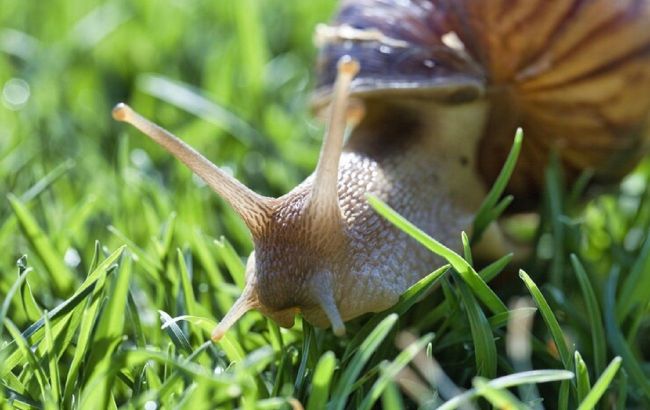What to consider before getting pet snail
 Snails do not require special care (photo: freepik.com)
Snails do not require special care (photo: freepik.com)
Snails can make wonderful pets. They don’t need to be walked, they don’t shed, and they don’t have an odor. They are quiet and require minimal space, and it’s certainly interesting to watch them glide slowly across their terrarium.
Snails and your schedule
Snails are generally active at night or early in the morning when other pets are asleep. If you want to observe their activity, you’ll need to adjust your schedule.
Snails prefer darkness, so dim the lights and slightly moisten their environment to encourage more activity. This way, you can enjoy watching and caring for them when they are most lively.
Children and snails
Children may have different preferences for pets: some might enjoy exotic pets like snails, while others might prefer more traditional animals such as guinea pigs.
Snails move uniquely, slowly sliding with their muscular foot and leaving a shiny trail of mucus. Children will likely find it fascinating to watch a snail effortlessly climb the walls of an aquarium or even the lid.
Snails do not require special attention, making them a good choice for children. However, this pet is suitable only for those children who understand that these animals are very delicate and must be handled with care.
Lifespan of snails
The lifespan of snails can vary depending on the species and their living conditions. In captivity, with proper care, snails can live longer than in the wild. For instance, brown garden snails typically live for a few years but can reach a more advanced age in a home setting.
If you’ve found a garden snail and decided to keep it as a pet, determining its exact age can be quite challenging.
How to care for snails
Snails are very delicate creatures, so follow a few simple rules to avoid harming them:
- Wash your hands before handling a snail. Use soap and water to remove harmful substances that the snail might absorb from your skin.
- Handle the snail gently. Lightly lift it from underneath with slightly damp hands to avoid damaging its delicate body.
- Avoid heights. Don’t let the snail crawl on surfaces from which it might fall, as this could cause injury.
- Don’t use force. If the snail is firmly attached to the terrarium wall, don’t attempt to pull it off forcefully, as this could lead to damage.
Snail housing
Snails don’t need much space. A small plastic or glass terrarium is ideal. The lid should be securely closed to prevent escape but should have a mesh or air hole for ventilation.
Use clean plant soil for the substrate and add some sphagnum moss on top so the snails can hide. Spray the snails with clean water daily, but avoid excessive humidity in the terrarium.
You can add a few decorations, such as aquarium decor, to the terrarium. While not necessary, these can make observing the snails more interesting for you and your children.
Time required for snail care
Snails need fresh food daily and occasional substrate changes. They don’t require special care or exercise, so most of your time will be spent buying and washing fruits and vegetables for them.
However, you’ll likely enjoy spending a few minutes each day watching your pets.
Zoonotic problems of snails
Snails, especially those caught in the wild, can carry parasites that may be transmitted to humans. To avoid infection, it’s important to follow these rules:
- Always wash your hands. Thoroughly wash your hands before and after handling the snail to protect both yourself and the animal.
- Don’t kiss the snail. Never kiss your snail or allow children to put it in their mouths.
- Educate children. Explain to children that they must wash their hands after handling the snail to prevent potential infections.
Feeding snails
Snails require a plant-based diet. Feed them fresh greens like dandelion leaves, lettuce, other leafy greens, pieces of cucumber, broccoli, or carrots. They also enjoy small pieces of strawberries, apples, and other fruits.
For shell health, snails need calcium. You can place a cuttlefish bone (available at pet stores) in the terrarium or sprinkle their food with finely crushed eggshells.
Feed the snail once a day. Provide a small portion to avoid spoilage in the terrarium and remove any uneaten food the next day. The snail gets enough water from its food and daily spraying, so a water bowl is not necessary.
Sources: The Spruce Pets and Wikipedia.

